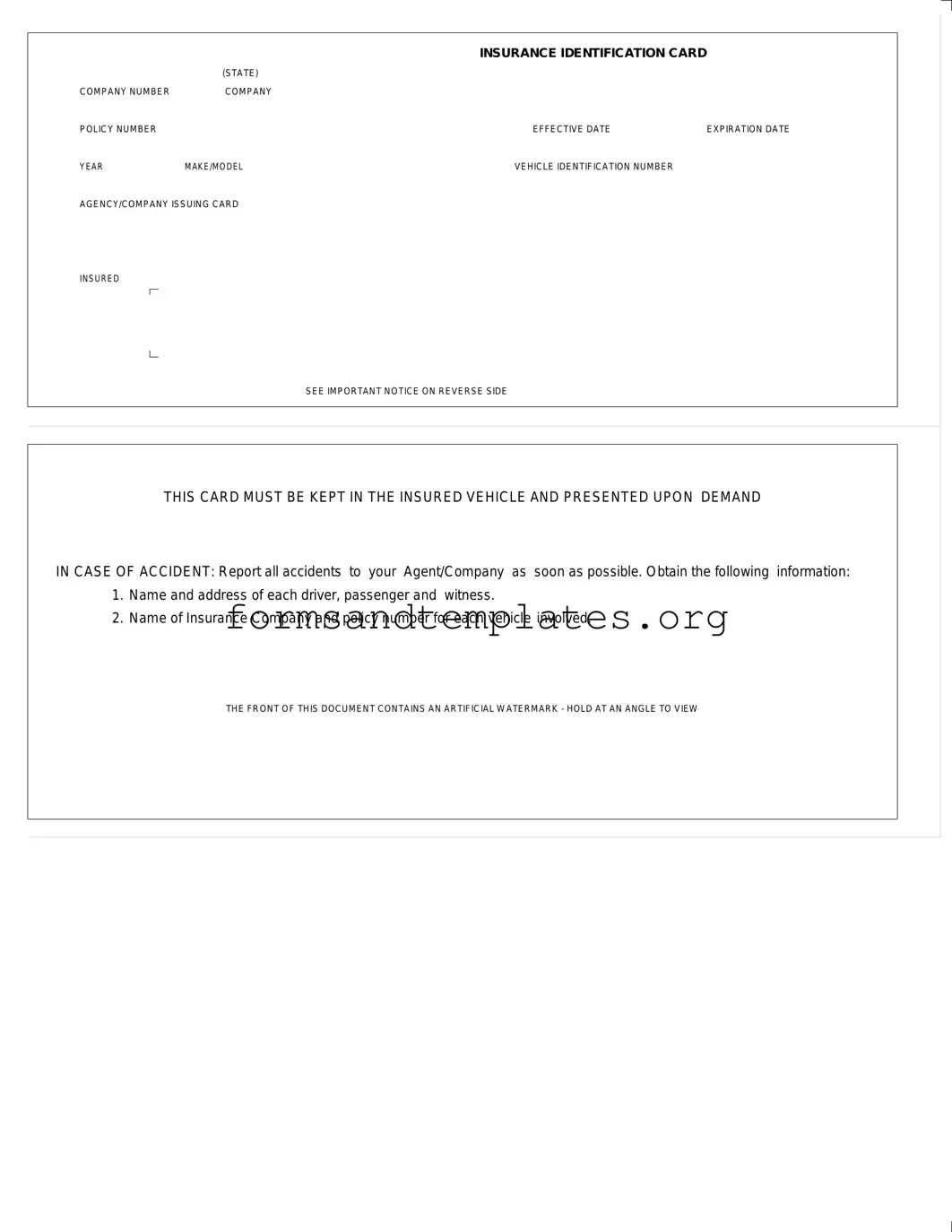The Auto Insurance Card is a crucial document for drivers, serving as proof of insurance coverage while on the road. This card includes several important details that are essential for both the insured and law enforcement. Key elements on the card consist of the insurance company number, policy number, effective date, and expiration date, all of which confirm the validity of the insurance coverage. Additionally, the card lists the year, make, and model of the insured vehicle, along with its Vehicle Identification Number (VIN). It is issued by the insurance agency or company and must be kept in the insured vehicle at all times. In the event of an accident, the card must be presented upon demand. Furthermore, drivers are reminded to report any accidents to their insurance agent or company promptly, gathering necessary information such as the names and addresses of all drivers, passengers, and witnesses involved, as well as the insurance details of other vehicles. Notably, the card features an artificial watermark for security purposes, which can be viewed by holding it at an angle. This comprehensive overview underscores the importance of the Auto Insurance Card in ensuring compliance with state regulations and facilitating the claims process.

